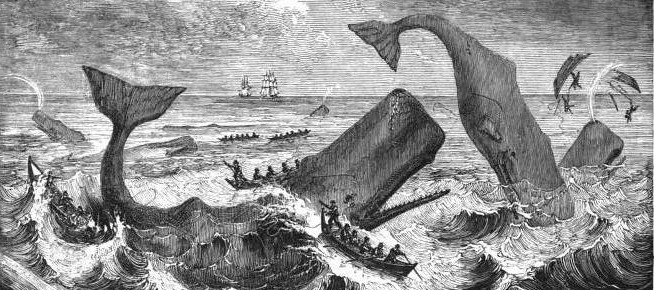Here’s a chapter missing from Moby-Dick: The life-story of a whale, read in earwax.
In this week’s issue of PNAS, a group of researchers reports the wealth of information that can be found buried in the earwax of a blue whale.
Throughout their lives, baleen whales develop wax in their ears, just like humans do. Every six months, a new layer, or “lamina,” is deposited. The laminae have regular color differences due to annual feeding and migration patterns, allowing researchers to distinguish each and every six-month period in the whales’ lives. Since whales don’t clean their ears like we do, their entire history is recorded in the wax plug by the time they die. These earplugs have long been used by scientists to figure out the age of whales, but it turns out the wax can tell us much more about whales’ lives than just how old they are.
Apart from the general interest and beauty of the earwax-plug of a whale containing a detailed record of its earthly existence, the article also reveals some disturbing signs of the ecological crisis brewing in the world’s oceans.
Some of the most telling results came from analyses of persistent organic pollutants, such as DDT, that ended up in the whale’s earplug. The researchers found measurable levels of 20 different pesticides used in the last several decades. Somewhat surprisingly, the highest concentrations of these pesticides were encountered during the first six months of the whale’s life; these peaks may be due to what the researchers called “maternal transfer.” In other words, pesticide residue could have been transferred to the young whale from its mother via her milk, which suggests that the mother must have had significant levels of these chemicals.
Melville set out to chronicle the whale. Did he ever think that the whale, meanwhile, was chronicling us?
Related articles
- Blue Whale Earwax Reveals Pollution Accumulated Over a Lifetime (blogs.smithsonianmag.com)
- Whale earwax reveals a timeline of its exposure to contaminants (wired.co.uk)

